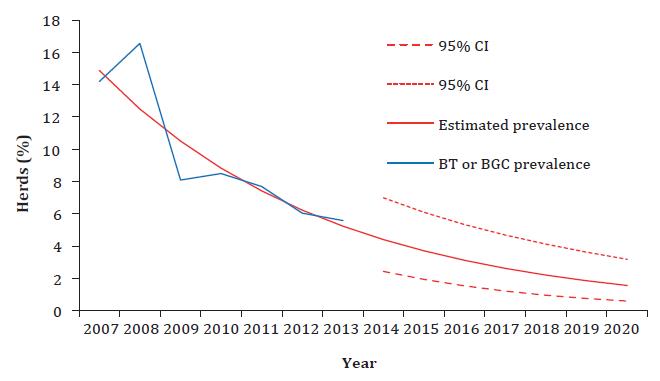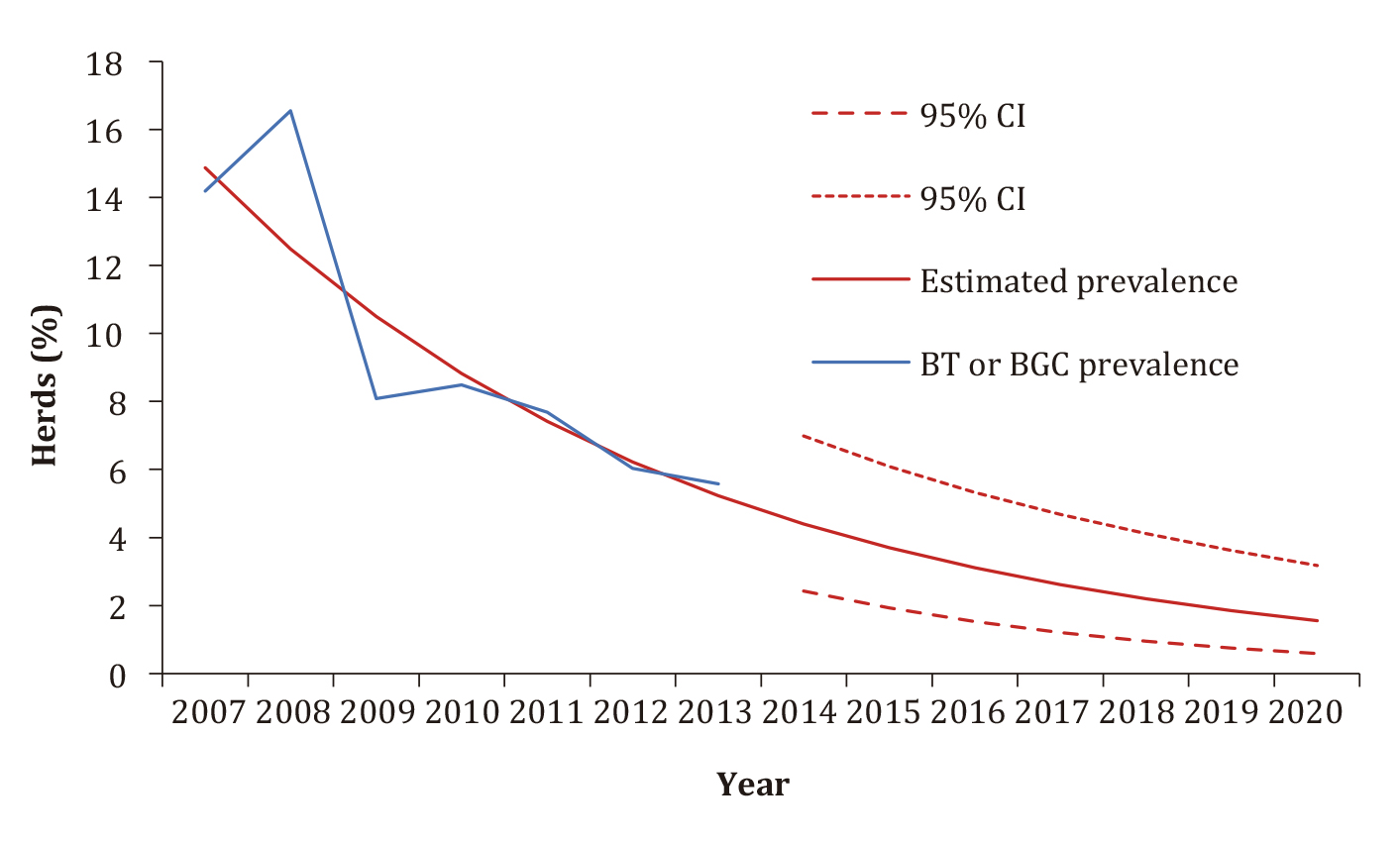Incidence, prevalence and persistence of bovine venereal diseases in La Pampa (Argentina): estimations for the period 2007 - 2020
Palabras clave:
Bovino, campilobacteriosis genital bovina, monitoreo de enfermedades venéreas, tricomoniasis bovina, modelizaciónResumen

The venereal diseases Bovine Trichomoniasis (BT) and Bovine Genital Campylobacteriosis (BGC) cause economic losses in endemic areas, such as the province of La Pampa in Argentina, where bovine production is typically extensive. This study has used data compiled from 2007 to 2013 by the Official Program for the Control and Eradication (PCE) of venereal diseases, aiming to determine the prevalence, incidence and persistence of BT and BGC and to provide projections until 2020. Fourteen univariate models were used to adjust each time series. The prevalence and incidence of both diseases have significantly decreased during the studied period, while the persistence has remained constant. The prevalence of BT has diminished from 7.48% in 2007 to 3.03% in 2013, while the prevalence of BGC has diminished from 9.36% to 3.15%. The incidences have been reduced to an annual average of 0.60 for BT and 0.67 for BGC. Although the estimation models are not able to predict accurately the future epidemiologic rates of BT and BGC in La Pampa, projections show a significant decreasing trend of the prevalence and incidence of BT and BGC. The persistence of BGC is expected to remain close to the 2007-2013 average, while the persistence of BT did not adjust to any of the 14 models used. These results indicate that PCE has been effective to reduce the infection of disease-free herds. However, in order to reduce the ratio of persistent herds, other preventive and management measures should be considered.
Highlights
- The venereal diseases Bovine Trichomoniasis (BT) and Bovine Genital Campylobacteriosis (BGC) cause economic losses.
- Univariate analysis was an effective tool for modeling the historical and future prevalence, incidence and persistence of BT and BGC infections.
- The prevalence and incidence of BT and BGC have significantly decreased during the studied period, while the persistence has remained constant.
- The Official Program for the Control and Eradication (PCE) of venereal diseases, has been effective to reduce the infection of disease-free herds.
Descargas

Descargas
Publicado
Cómo citar
Número
Sección
Licencia
Aquellos autores/as que tengan publicaciones con esta revista, aceptan las Políticas Editoriales.










.jpg)




